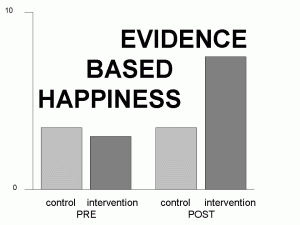Designing for Happiness using Evidence
One goal of cognitive design is to support or even create specific mental states (thoughts and feelings) in people. We do this by tweaking the features, functions and forms of artifacts or anything that is designed such as products, workflows and customer experiences. We don’t do this by tweaking randomly. Ideally, we use solid and sometimes emerging insights into how minds really work from cognitive science.
For example, the so-called science of happiness has been very much in the news lately. So it is not surprising when I get a question like:
How can we use the science of happiness to design organizations that make employees happier (more productive) and customers happier (more satisfied)?
[Chinese symbol for double happiness - employee and customer]
The literature on positive psychology and happiness studies is vast. Where should you start?
I like the approach of Hein Zegers. As a happiness researcher at the University of Leuven, a nearly 600-year-old Belgian center of learning and research, he stressses the importance of establishing evidence-based interventions.

He has found a number of interventions that claim to improve happiness and are supported by outcome studies. For example:
* Physical exercise
* Keeping a gratitude journal
* Random acts of kindness
* Forgiveness
* Doing flow-inducing activities
and so on.
Rather than exotic ideas we see almost common sense interventions. The value add is that they are supported by outcome studies and there is a dash of cognitive science to help us shape their application in a way that goes beyond common sense. Each evidence-based happiness intervention can be creatively adapted to employee or customer needs by a good cognitive designer.
For the complete list visit So what makes people happy? or better browse his site Evidence Based Happiness.
